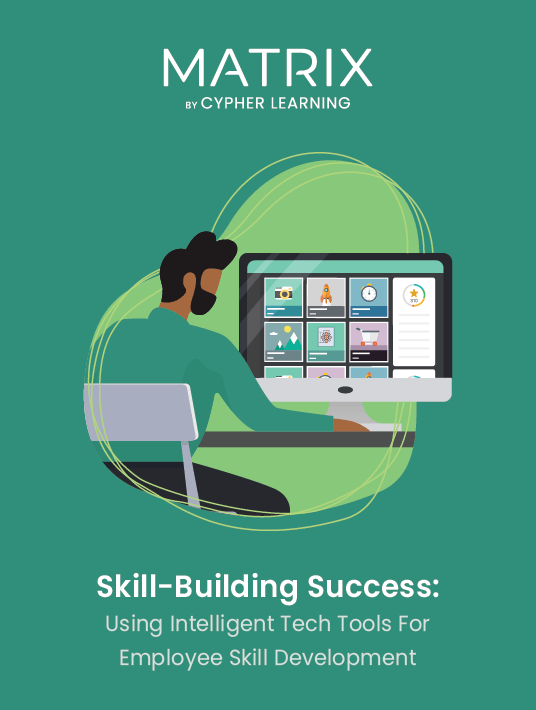What Are Your Employees' Skill Development Expectations?
In LinkedIn’s 2022 Workplace Learning Report [1], 94% of employees say they would stay at a company longer if it invested in helping them learn. It’s a win-win for organizations to invest in a skill development program to equip employees to perform their jobs well, and also increase employee confidence that their employer cares about their career development and future.
Employers don’t have to guess what employees want, because if they ask, employees will tell them. Here are four employee expectations that every skill development program must meet.

Employees Want To Be Competitive In The Labor Market
Employee confidence decreases when COVID and automation threaten jobs. A Boston Consulting Group and The Network [2] study found that more than a third of workers globally lost their jobs or had to accept reduced work hours because of business closures or slowdowns stemming from COVID.
Employees know that the more competitive their skills, the more likely they will be to maintain employment, which is why upskilling is so crucial. Gallup defines upskilling as training that teaches new skills or upgrades existing skills, while some learning experts differentiate between upskilling as upgrading existing skills and reskilling as learning new skills.
A Gallup/Amazon study [3] found that nearly two-thirds of workers believe employer-provided upskilling is very important to evaluating whether to stay in their current job or accept a new job offer. The trend is highest among employees earning $120K+ per year. Young workers (age 18 to 24) listed upskilling as the third most important benefit when evaluating a new job, with only health insurance and disability benefits ranked as more important.
Employees Want Career Advancement
Anxiety is high among all workers post-COVID, but remote workers, in particular, are worried about falling behind in their careers (CNBC) [4]. The most desirable employers will be those who offer remote employees an effective skill development plan with a clear path to career advancement. Additionally, employees appreciate mentorship from people who are farther along in their careers and can share wisdom and experience.
For some employees, career advancement in an area aligned with their interests and values will mean changing their career focus, so smart employers will enable employees to change their functional roles. Employees who work in positions that suit them best are more likely to stay loyal to an employer.
For employees to judge their employers as fair and inclusive, career-building skills must be available to all, not just a chosen few. For example, leadership training is valuable to all employees who aspire to become managers, whether now or in the future. Employees can feel “stuck” at their current level if an organization limits leadership training to those who have already landed in the executive suite.
Employees Want Training To Be Personalized And Relevant
It frustrates employers when the skills their workers learned in school are out of sync with the skills needed to succeed on the job. Employees, too, want training to be immediately valuable. This means “one size fits all” learning is less likely to benefit employees than learning that is both practical and tailored for each employee’s individual learning goals.
Because many organizations are understaffed, employees have limited time to take part in learning. Personalized learning is quicker because it will focus only on what the learner needs to know. Even highly motivated employees only have so many hours in a day, so personalization is one way to make learning useful for time-crunched employees.
Personalization is increasingly the norm in technology, entertainment, and shopping, so learners also expect these characteristics in their training programs. Employees are happiest and most productive when their work expectations are clear, the organization aligns training with what they need to learn, and they know what rewards they will earn if they meet their performance objectives.
Employees Want Training To Be Accessible And Convenient
Employees want collaborative technology to support agile learning (Harvard Business Review) [5]. Some promising learning trends that make training more accessible and convenient are:
Remote – Because so many jobs now are remote, it is important for employers to offer remote opportunities to learn. [6]
Asynchronous – Employees can complete learning at the time and place of their choice.
Microlearning – The training offers a format where learners can master small amounts of information in a short amount of time. [7]
Gamification – The creators of the skill development program make it fun and game-like. [8]
Key Takeaways
Employers will enjoy better outcomes from their skill development programs if they align training objectives with employee learning objectives. They need to offer employees training that helps them remain competitive and advance in their careers, that is complete, personalized, relevant, and also accessible and convenient.
Download the eBook Skill-Building Success: Using Intelligent Tech Tools For Employee Skill Development to learn how you can use modern technology to fuel employee growth.
References
[1] 2022 Workplace Learning Report: The Transformation of L&D
[2] Worried About the Pandemic’s Aftermath, 68% of Workers Say They Would Train for a New Career
[3] The American Upskilling Study: Empowering Workers for the Jobs of Tomorrow
[4] Return-to-office fears: Remote workers worry about falling behind in careers
[5] What Your Future Employees Want Most
[6] How to provide personalised training and support for remote workforces
[7] What Is Microlearning: A Complete Guide For Beginners
[8] Gamification For Learning: Strategies And Examples








